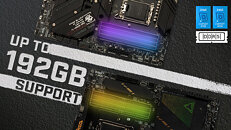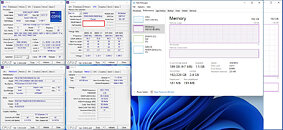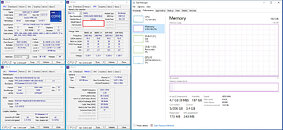TheLostSwede
News Editor
- Joined
- Nov 11, 2004
- Messages
- 18,541 (2.48/day)
- Location
- Sweden
| System Name | Overlord Mk MLI |
|---|---|
| Processor | AMD Ryzen 7 7800X3D |
| Motherboard | Gigabyte X670E Aorus Master |
| Cooling | Noctua NH-D15 SE with offsets |
| Memory | 32GB Team T-Create Expert DDR5 6000 MHz @ CL30-34-34-68 |
| Video Card(s) | Gainward GeForce RTX 4080 Phantom GS |
| Storage | 1TB Solidigm P44 Pro, 2 TB Corsair MP600 Pro, 2TB Kingston KC3000 |
| Display(s) | Acer XV272K LVbmiipruzx 4K@160Hz |
| Case | Fractal Design Torrent Compact |
| Audio Device(s) | Corsair Virtuoso SE |
| Power Supply | be quiet! Pure Power 12 M 850 W |
| Mouse | Logitech G502 Lightspeed |
| Keyboard | Corsair K70 Max |
| Software | Windows 10 Pro |
| Benchmark Scores | https://valid.x86.fr/yfsd9w |
Today MSI is announcing the support of 48 GB and 24 GB DDR5, non-binary memory across Intel 700 and 600 Series motherboards, including MEG, MPG, MAG, and PRO Series products. Namely, the maximum memory capacity support is increased to 192 GB for 4 DIMMs motherboards and 96 GB for 2 DIMMs motherboards. MSI has committed to providing performance and compatibility to DIY enthusiasts.
It is unnecessary to update motherboard BIOS for supporting 48 GB based memory modules. Just install the new memory module to enjoy a more efficient system with more productivity, especially for those multi-tasking gamers and users.



[/url]
View at TechPowerUp Main Site | Source
It is unnecessary to update motherboard BIOS for supporting 48 GB based memory modules. Just install the new memory module to enjoy a more efficient system with more productivity, especially for those multi-tasking gamers and users.



[/url]

View at TechPowerUp Main Site | Source





